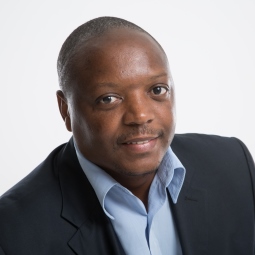International numerical experts converged at the CSIR for climate change meeting
The CSIR hosted the 31st Working Group on Numerical Experimentation (WGNE) of the World Climate Research Programme on 26 – 29 April 2016 in Pretoria. The annual meeting was not only a first for the CSIR, but was also a first for Africa.
Thirty of the world’s leading atmospheric modelling experts, from 15 of the largest climate modelling institutions globally, met at the CSIR to discuss new developments and improvements in the area of atmospheric modelling in the past year. The experts also provided evidence on the rigorous testing their models have undergone.
The CSIR hosted the 31st Working Group on Numerical Experimentation (WGNE) of the World Climate Research Programme on 26 – 29 April 2016 in Pretoria. The annual meeting was not only a first for the CSIR, but was also a first for Africa.
Thirty of the world’s leading atmospheric modelling experts, from 15 of the largest climate modelling institutions globally, met at the CSIR to discuss new developments and improvements in the area of atmospheric modelling in the past year. The experts also provided evidence on the rigorous testing their models have undergone.
“Science is the foundation to a better future and the development of the first African-based Earth System Model is an extremely important project of the CSIR,” said the Executive Director: CSIR Natural Resources and the Environment, Prof May Hermanus, when welcoming the delegates to South Africa. May also mentioned that the recent drought in South Africa re-emphasised the importance of having skilful weather prediction systems available for warnings. “I believe that improving atmospheric models for exactly this purpose is one of the WGNE’s main objectives.”
One of the co-chairpersons of the WGNE, Dr Ayrton Zadra, research scientist from Environment Canada, mentioned that the working group exists to address the need to share knowledge and experiences on the scientists’ atmospheric models. “The ‘Numerical’ in WGNE simply means calculated by computer. Technology is constantly evolving and the objective is to identify the problems and improvements with the computer models,” said Ayrton.
Enhancements to computer models result in more accurate weather predictions. “For example, on Tuesday, 26 April 2016, the thunderstorm in Pretoria was predicted to be early in the day, but actually occured in the afternoon. The error in the forecast was caused by the computer model,” explained Dr Keith Williams, research manager of the United Kingdom Meteorological Office and co-chairperson of the WGNE. This can be catastrophic for storm events resulting in the displacement of people.
According to Ayrton, bringing the WGNE to Africa provides an opportunity for knowledge to be transferred to local scientists. “This also means that the CSIR is at the focal point of developing atmospheric models for Africa and this makes the organisation a world player,” said Ayrton.
CSIR Atmsopheric Scientist and Research Group Leader for Climate Studies Modelling and Environmental Health, Prof Francois Engelbrecht, highlighted, “The meeting was a wonderful opportunity for the CSIR to present to the international community our capacity in climate change modelling. The CSIR presented progress made in the prediction of the southern hemisphere climate variability.” Francois is a member of the WGNE and offered to host the meeting at the CSIR this year.
“Our objective is to emphasise the development of the first African-based Earth System Model by the CSIR and its partners, the Commonwealth Scientific and Industrial Research Organisation in Australia and Japan Agency for Marine-Earth and Technology. Only 30 of these models exist in the world and this is the only one that will be developed through an African lense. It will focus on improving the simulation of the African climate and that of the southern hemisphere,” explains Francois. In other words, the CSIR will enable the people of Africa to be better prepared in dealing with the impacts of drought and floods by providing reliable and more accurate projections of future climate change in Africa.
Membership of the WGNE is by invitation only and Francois was invited to become a member in 2013. This was due to his active contribution in the field of climate modelling in Africa.


